Tagged with 'Cultured pearls'


-
Measuring and Choosing a Pearl Size
Measuring and Choosing a Pearl Size
One important factor in designing pearl jewellery is the size of the pearl itself. Pearl size can have an immediate impact on the aesthetic look of the jewellery, its technical design as well as defining which types of pearl may be used and the value of these.
How should pearl size be measured and what should you look for when choosing pearl jewellery?
MEASURING A PEARL'S SIZE
We grade pearls in accordance with a system proposed by the Gemological Institute of America, the body that introduced the 4Cs grading system for diamonds. This grading information is disclosed on each product page of the Winterson website. Pearl Size is one of the 7 value factors recommended by the GIA when grading a pearl.
Measuring a round pearl is relatively simple. The diameter is usually measured and given to the nearest 0.5th millimetre. Other shapes of pearls, for example, drop or baroque-shaped pearls, are harder to size in the same manner and so two dimensions are usually given: the width and the height of the pearl, again to the nearest 0.5th millimetre.
The smallest pearls are called seed pearls, which can be as tiny as 1 millimetre in diameter, whilst the largest pearls commercially available can reach 2 centimetre in diameter and are produced in large South Sea oysters.
FACTORS THAT INFLUENCE A PEARL'S SIZE
For a bead nucleated cultured pearl, the eventual size of the pearl will be determined by the size of shell nucleus used by the pearl farmer to help stimulate the production of the pearl, the health of the mollusc and how long the pearl remains in the mollusc to grow.
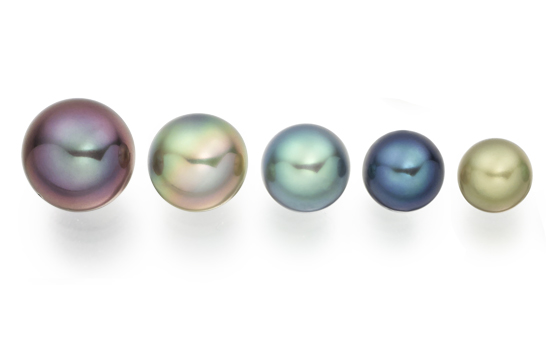
The size of the pearl can also give away a lot of clues about a pearl. For example, it is unusual today to find a white Akoya cultured pearl that is greater than 10mm diameter due to the size of its saltwater oyster host.
Similarly, most round Tahitian and South Sea cultured pearls are generally only found in sizes greater than 8mm, with a few reaching more than 18mm in rare instances.
CHOOSING THE RIGHT SIZE OF PEARL
Choosing the right size of pearl is mostly a matter of personal preference and budget. The smallest seed pearls can look as if they should be decorating a piece of royal or antique jewellery. In contrast La Peregrina, one of the best known natural pearls, was recently sold at auction for almost $12million and measured an incredible 17.5mm by 25.5mm.
The most popular sized pearls tend to be in the 7-9mm diameter range as this is a good, easy-to-wear size for necklaces and earrings. In general terms, a smaller pearl might suit a younger woman or slighter frame better, whilst a larger pearl over 9mm can be more contemporary in its style, luxurious and powerful as a statement.
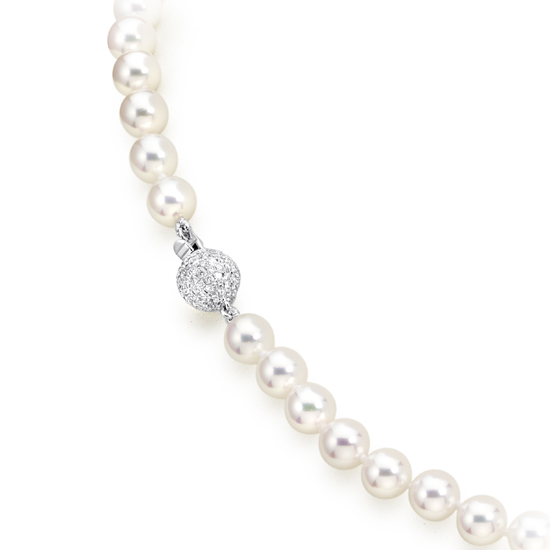
Most of our Freshwater and Akoya pearl jewellery is made with pearls that are 7-9mm in diameter and our Tahitian and South Sea pearl jewellery with pearls that are 9-13mm in diameter.
If you are hesitating between pearl sizes, consider your body frame, the occasions on which you would like to wear the pearl jewellery and your budget. A simple trick may be look into your jewellery box and measure other jewellery you already wear.
MATCHING PEARL JEWELLERY
A contemporary pearl set will usually have pearls of the same size and shape and colour, as in our Classic Akoya Pearl Necklace, Bracelet and Earring Set. The exquisite consistency of size, shape and colour of the pearls gives a sense of symmetry, perfection and beauty to the jewellery.
Pearl jewellery sets though do not have to have pearls of same size and shape to look amazing. Try a drop-shaped pearl pendant with a pair of earrings studs for a classic style, also favoured by brides.
The simplest advice if you are matching a new piece of jewellery with some existing pearls, would be to keep the variation within 1-2mm of diameter difference. As the ‘piece de resistance’, a necklace will also typically have larger pearls than a matching pair of earrings or bracelet.
NEED MORE HELP?
We choose the pearl size that we feel will most elegantly match the design of our jewellery.
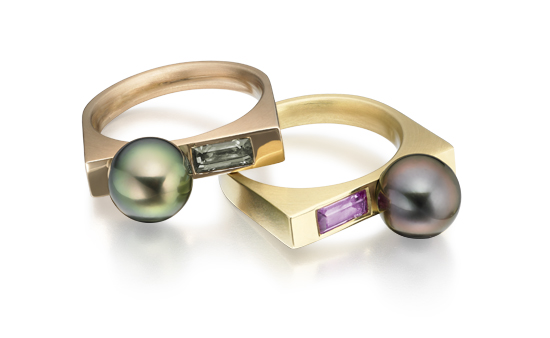
If you have any questions regarding the size of our pearls, or choosing a piece of pearl jewellery, please Contact Us and we would be delighted to assist you.
-
Small is Beautiful - What are Seed Pearls?
Small is Beautiful - What are Seed Pearls?
The use of seed pearls in fine jewellery throughout the latter part of the 19th century was immensely popular. Elaborately decorated brooches, tiaras, pins and earrings were very representative of Victorian fashion at the time. In this article, we look at what are seed pearls?
A Fashionable Pearl
Seed pearls have long been admired by jewellers for their elegance and traditional style.
The example above of an exquisite Fabergé Egg, made for Nicholas II of Russia in 1901, stands just 12cm tall and is adorned with seed pearls. The famous French jeweller to the Tsars was known for crafting his jewelled masterpieces with precious metals, enamel, gems and delicate pearls.
Prestigious jewellers such as Tiffany, Cartier and Boucheron also studded their designs with these tiny gems to match the sensual decadence of La Belle Époque fashion.
How are these small pearls made?
The Formation of Seed Pearls
A seed pearl is a small natural pearl, formed in either a saltwater oyster or freshwater mussel, that is usually less than 2mm in diameter.
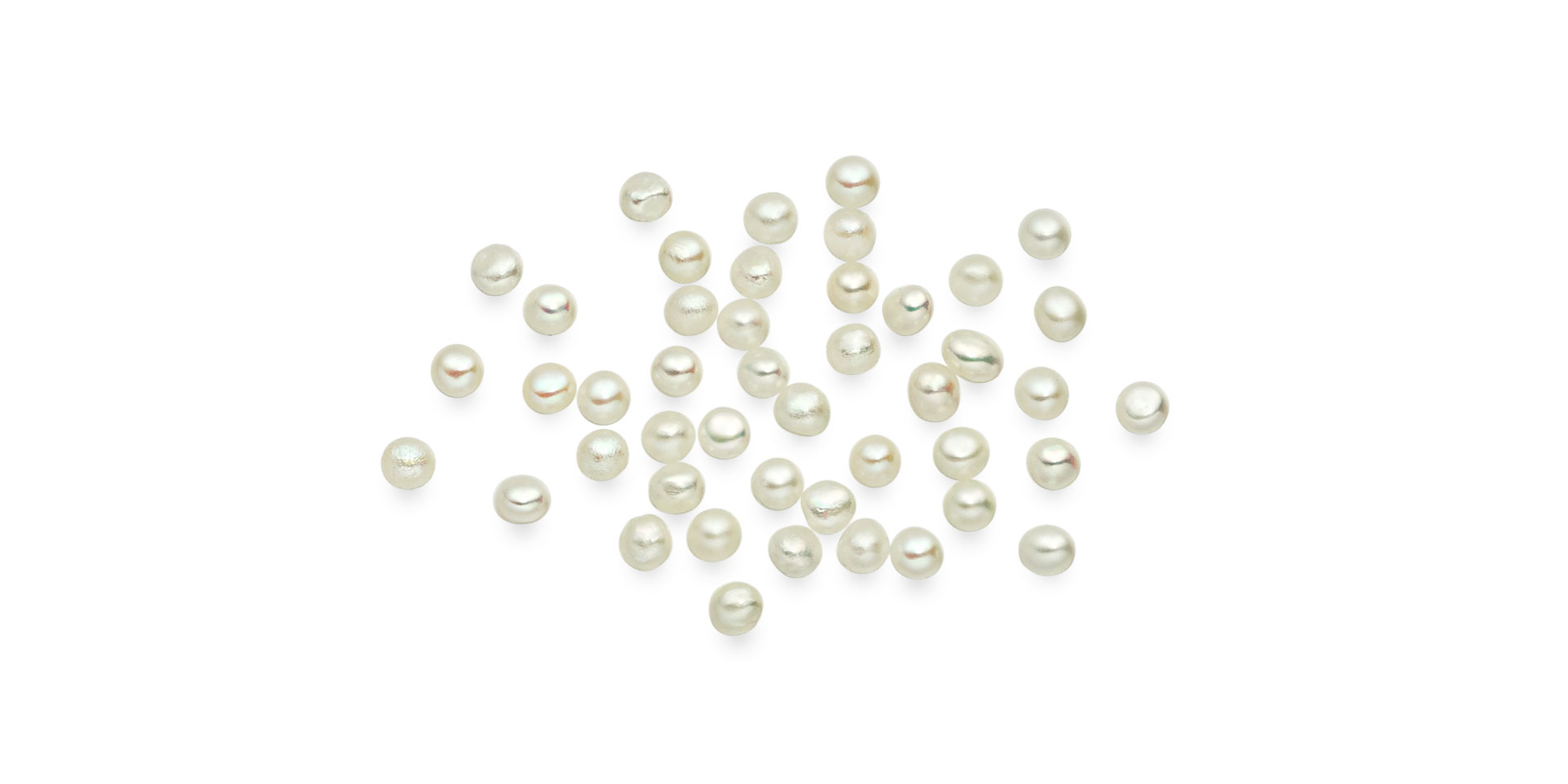
Image: Cultured seed pearls
These pearls would have been found when divers searched for natural pearls in the Persian Gulf and Asia, or closer to home in streams and rivers of the USA, Europe and the British Isles.
Today the term "seed pearl" is more widely used to describe a small pearl that has been created as a result of a pearl farmer trying to stimulate the formation of a cultured pearl in a mollusc.
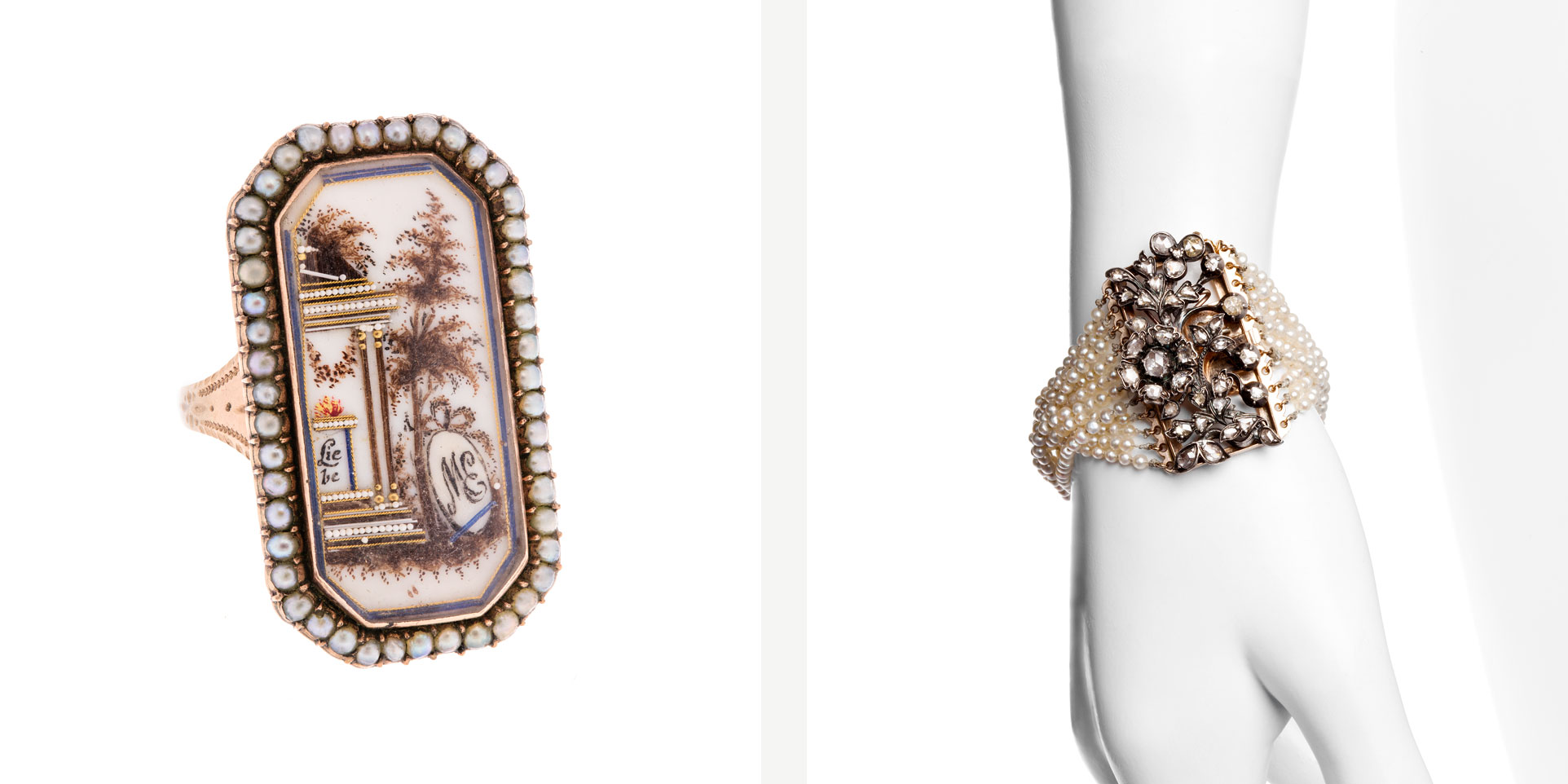
Image 1: Funeral Ring, Landscape and Temples, 18th Century
Image 2: Armband, Jacob Engelberth Torsk, Stockholm, 19th Century
These cultured seed pearls are formed with the accidental help of a loose piece of tissue in the mollusc, perhaps when the implanted bead has been separated from the pearl sac or has been expelled by the oyster.
Traditionally, the first cultured seed pearls would have been formed in Akoya oysters or Lake Biwa freshwater mussels in Japan.
Learn about the different Types of Pearls in our Buying Guide here.
Seed Pearls in Jewellery
Preparing such a tiny seed pearl for use in jewellery requires precision and a careful eye, particularly if the pearl is to be individually drilled and strung in a necklace or tassel earrings.
The famous Baroda Pearl Carpet, sold at auction by Sotheby's in 2009 for $5.5m, was covered with around 1.4 million seed pearls, all drilled by hand and sewn decoratively onto the fabric.
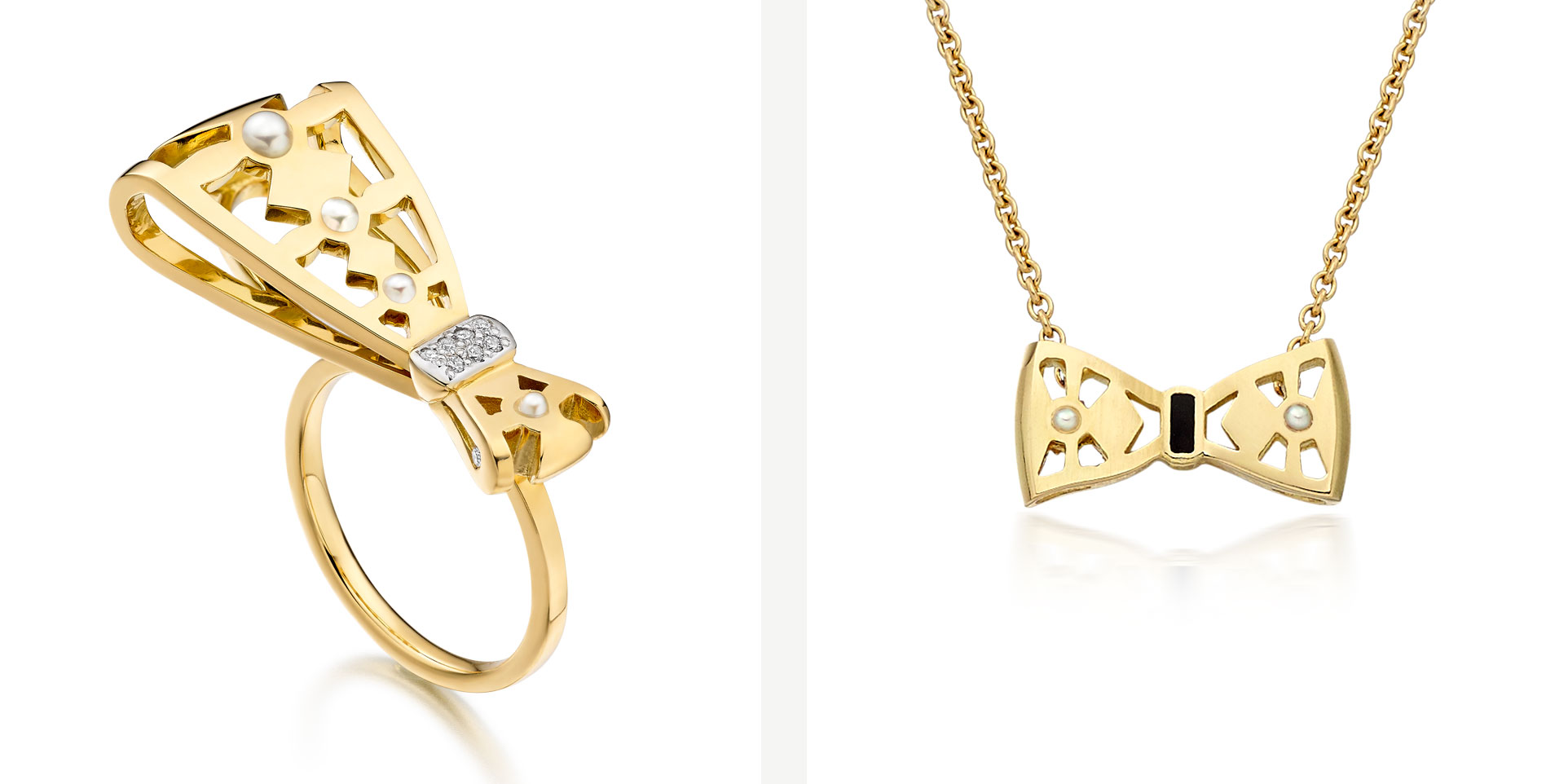
Image 1: Beau Seed Pearl and Diamond Ring with Yellow Gold
Image 2: Beau Seed Pearl and Enamel Pendant with Yellow Gold
Beau, our collection of pearl jewellery and pearl rings, inspired by the Georgian fashion for using seed pearls in jewellery, was designed by Alice Cicolini in 2013. The collection juxtaposes the delicate seed pearl with enamel and white diamonds, and uses the bow as its central motif.
We hope you will agree that Small is most certainly Beautiful!
-
An Introduction to Pearl Colour
An Introduction to Pearl Colour
One of the most beautiful and unique qualities of a pearl is its colour. The popular image of a cultured pearl is that it should be pure and white, but there are many more types of pearls with natural, and quite unnatural colours. What determines a pearl's colour, how is pearl colour graded by an expert and what should you look for when buying pearls?
WHAT CAUSES A PEARL'S COLOUR?
The physical colour of a pearl is influenced by a number of factors. The colour of the host mollusc's shell, and the genetic fingerprint of its tissue and epithelial cells, gives the greatest clue to a pearl's eventual colour. A classic Akoya pearl, for example, will have a neutral white body colour similar to the shell colour of its oyster and a Tahitian pearl will have the dark tones of the black-lipped Pinctada margaritifera cumingii oyster. Although pearl farmers and scientists have tried to influence the colour of a cultured pearl through the selection of a small piece of mantle tissue for pearl grafting, the specific pearl colour remains somewhat of a mystery until the pearl is fully formed.
The quality of a mollusc's environment can influence its colour and is one reason why pearl farmers are increasingly focused on raising marine environmental awareness. The quality and nutritional content of water directly affects an mollusc's health, its growth rate and the quality of the nacre it produces. If the nacre of a pearl is very thin or of poor quality, the colour of the pearl will appear matt and lack overtones. The striking metallic bronze and green colours of some natural American freshwater pearls, for example, are believed to be a result of trace elements such as copper in the local water systems.
There are many shades of colour-treated pearls available today, including Black Freshwater and Akoya, Grey and Peacock Freshwater pearls, Chocolate, Cherry and Rose. Each of these unnatural colours will have been the result of a colour treatment after the pearl has been cleaned. Some colour treatments such as bleaching and applying a pink tint are so widely used that they are rarely disclosed. Other more significant post-harvesting treatments, however, might include immersion in silver nitrate and irradiation to lighten or darken a pearl's colour.
GRADING PEARL COLOUR
The pearl industry and pearl lovers alike commonly use a variety of terms such as gold, pistachio, lavender to help describe the colour of a pearl. To help standardise how pearls are graded, The Gemological Institute of America (GIA), which led the way in establishing a classification system for diamonds, introduced Color as one of its seven key criteria for grading the quality of pearls.
An expert will assess the colour of each pearl according to a description system that uses 19 different cool and warm colour hues.
Each pearl should have the following three characteristics described, where applicable:
- Bodycolour – the dominant, overall colour of a pearl
- Overtone – some pearls display one or more additional overtones of colour in the reflection near the top of a pearl
- Orient – the rainbow colours that are displayed just below the surface of a pearl, usually those of a baroque shape, as it is rotated
As well as having many years of experience with pearls, the team at Winterson is trained in pearl grading by the GIA. Pearl Colour is one of the value factors that we use to describe the pearl jewellery at Winterson. If you would like to know more about the quality of our pearls, or how we grade them, please do contact us.
WHAT TO LOOK FOR
In our experience the most popular colour of pearls is still white, perhaps matched with the sparkle of a diamond. There are more choices of types of pearl available in this colour, that the size of pearl and an individual's budget start to be a significant decision factor.
The pastel shades of freshwater pearls are beautiful for wearing in the summer. The darker exotic shades of Tahitian pearls are contemporary in style and very elegant for business and evening wear.
Some dyeing treatments can be identified if the pearls are uniformly one colour or at the drill hole where it may be possible to see some residue of dye. A darker nucleus inside the pearl may also be evidence of irradiation treatment. If you are concerned about a pearl's colour, ask your jeweller and look for proper disclosure of colour and other grading factors when buying pearls.
-
Roaring Twenties Fashion for SS 2012
Roaring Twenties Fashion for SS 2012
If you enjoyed the recent nostalgia of The Artist, the catwalk fashions for Spring/Summer 2012 look to continue the revival of the Roaring Twenties, with drop waist dresses, crisp whites, relaxed pastels and glamorous drapes of pearls.
The 1920s were prosperous years between two world wars that saw a wave of social, cultural and technology developments. Art Deco styling led the design world with clean geometrical lines and contrasting colours of black, white and gold, inspired by the Ancient Egyptians and the Aztecs. In New York, the Empire State Building and the Chrysler Building are still two of the most emblematic buildings of their time. Technology breakthroughs such as radio, cinema ‘talkies’ and the automobile brought a new and popular sense of freedom.
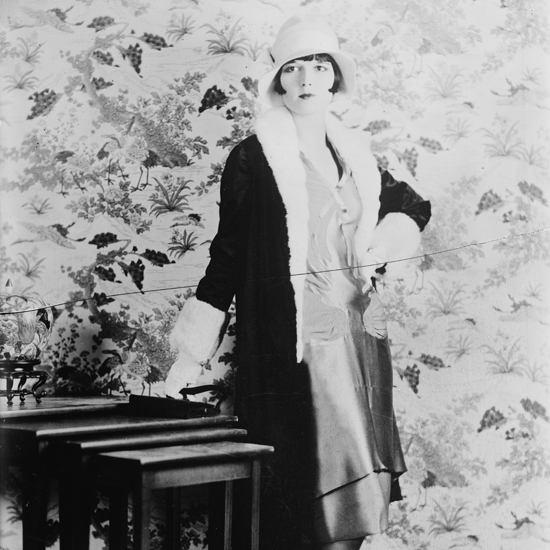
In the fashion world, young women cast aside decades of Victorian fashion and restraining corsets to express their independent and modern aspirations. Detail that was influenced by Art Deco, with zigzags and geometrical shapes, was also however about comfort. Knee-length skirts, drop waist dresses, low necklines with exposed arms and wrists by iconic designers such as Coco Chanel and Elsa Schiaparelli were characteristic of the time. Feathers, tassels and silk added a fluid and deliberately flirtatious appearance.
Cultured pearls were the gem of the decade. Long white pearl necklaces were wrapped and often layered around the neck, enhancing the low necklines. These chic pearl sautoirs would swing with movement and dancing. Earrings and drop earrings sat visibly below bobbed haircuts and pearl bracelets decorated bare arms and wrists.
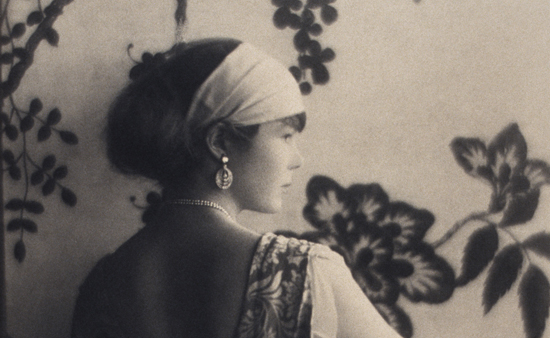
Nearly a century on, the iconic Roaring Twenties that was depicted by F. Scott Fitgerald in The Great Gatsby is still inspiring designers today. In sharp contrast to today's mood of austerity, the Spring/Summer 2012 collections of Ralph Lauren and Gucci reference this seductive era of glamour with fluid lines, slim silhouettes, cloche hats, silk, feathers, drop earrings and of course swinging long white pearl rope necklaces.
With a Gatsby film adaptation also due later this year, you could be forgiven for thinking it’s the 1920s again. There may not be the same rebellious energy of the flapper driving automobiles, listening to American jazz and attending glamorous parties but we love its look and confidence.
-
What are Coin Pearls and how are these flat pearls made?
What are Coin Pearls and how are these flat pearls made?
Coin pearls are pretty flat-shaped cultured pearls that can be worn casually during the day and add a touch of individual glamour to the evening. Shaped as flat buttons or coins, the best quality coin pearls will shimmer with a beautiful pearlescence.
How are coin pearls made?
Coin pearls are cultured pearls mostly farmed today in China in freshwater mussels in river, lakes or streams. They are formed by the pearl farmer inserting a flat round nucleus into the mussel to help it form the shape of the coin pearl. The mussel will deposit nacre around this disc, often made of shell, so that there is an even thickness of nacre on both sides of the flat pearl.
The process can take up to a year before the pearl is ready. Choosing exactly when to remove the pearl from the mussel is important. Too soon, and the nacre will be very thin, with the shape of the disc nucleus being quite visible. Too late, and the pearl will begin to take on a baroque, non-symmetrical shape.
What are the qualities of coin pearls to look for?
Coin pearls are typically 10-12 mm in diameter, with all the amazing natural white, pink and peach colours of Freshwater pearls. The flat shape of the coins are perfect for jewellery as the surface usually exhibits strong lustre and the flat shape will lie against the skin easily.
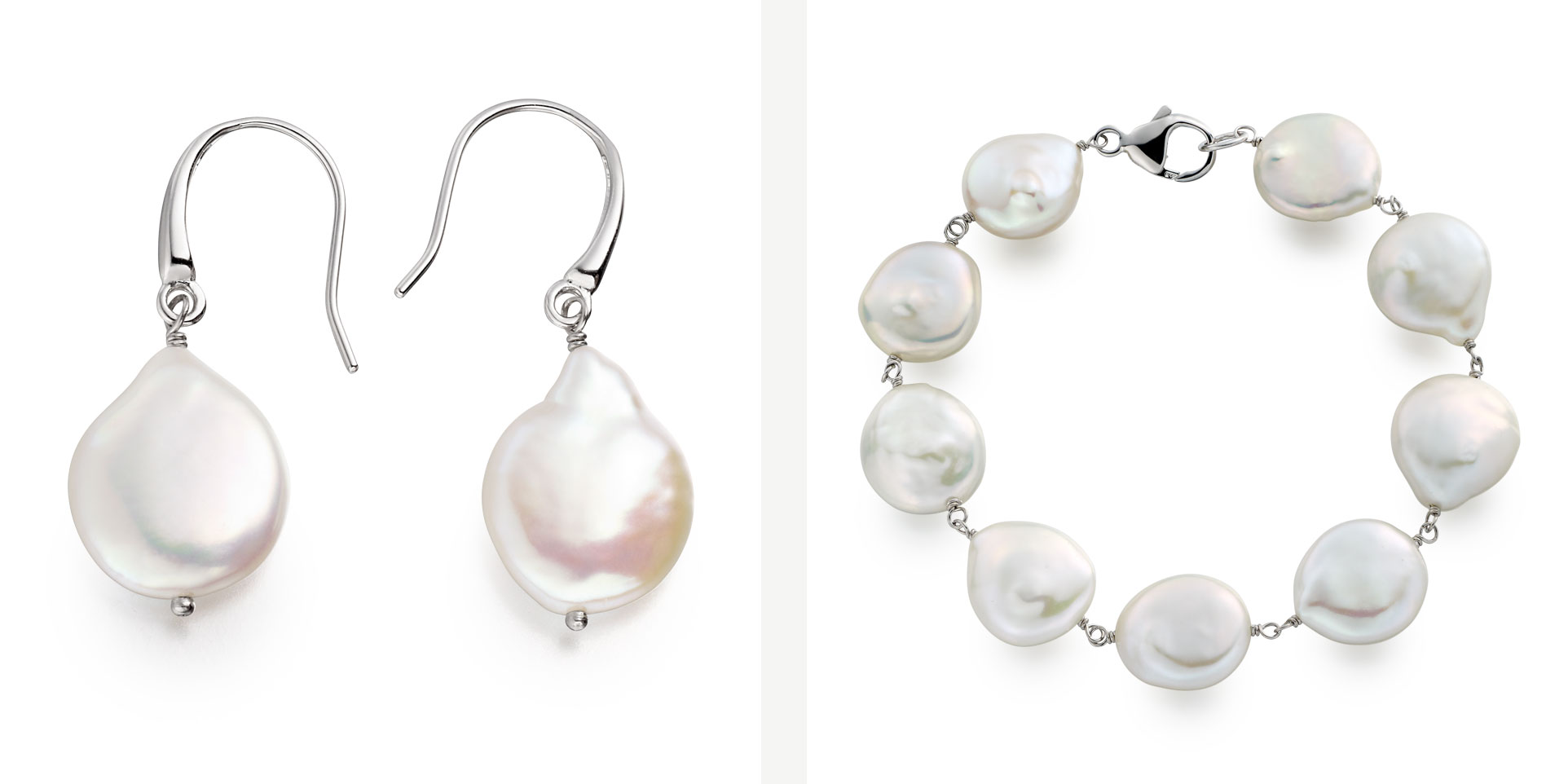
Image 1: Coin pearl earrings
Image 2: Coin pearl bracelet
The quality of coin pearls can vary significantly. When choosing a necklace or bracelet made from coin pearls, or a pair of coin pearl earrings, look closely at the quality of the nacre. If you can easily see the shape of the flat shaped nucleus within the pearl, it is likely that the pearl has been removed from the mussel too early and the thickness of the nacre is too thin. This may lead to dull lustre and the pearl may be prone to scratching or damage.
The highest quality coin pearls with a perfectly round shape, excellent nacre, excellent surface quality are sought after. They are typically bought and sold by specialist dealers.
We look for coins that have a thick coating of nacre. Often these pearls will have some shape or surface irregularities, such as flame-like tails or small bumps, but we love the way that these imperfections add to the character of the jewellery. Their flat shape will lie beautifully and comfortably around the neck.
If you are not familiar with pearls, view our collection of Freshwater pearl jewellery. -
What is a Mabe Pearl?
What is a Mabe Pearl?
A Mabe pearl is a composite cultured blister pearl, a large half pearl of glorious nacre that is popularly used for making pearl pendants and pearl earrings.
The Chinese are considered to be the true inventors of the blister pearl, which is a type of cultured pearl. The earliest finds in China of a nacreous layer of pearl grown around a lead image of Buddha have been dated to as far back as the 12th century.
Mabe pearls became better known in the 1950s as an affordable and fashionable way to wear large pearls, for the white South Sea cultured pearls that we have today were widely unavailable. Japanese companies started to produce blister pearls on the Ryukyu Islands between Japan and Taiwan. The word Mabe possibly comes from an old dialect spoken on those islands. Today Mabe pearls are still produced in Japan and China, but also in Indonesia, the Philippines, Thailand and French Polynesia.
Using an adaptation of the process for culturing pearls, a rounded or shaped nucleus is glued onto the inside of the shell of a nacre-producing mollusc. Nacre is the iridescent organic substance that gives pearls their unique properties. The mollusc covers the nucleus as shown in the image above and, after up to two to three years of culturing, the Mabe blister pearls are cut from the shell. The nucleus is removed and the resulting space is filled with resin, or sometimes a bead, and the back of the pearl is sealed with a piece of mother of pearl. The final result should be a beautiful silky pearl of between 12 and 25mm in size.
Mabe pearls are often associated with a traditional style of round pearl earring such as those seen in Meryl's Streep's publicity images for the film 'The Iron Lady'. They are also used by designers to make imaginative pieces of distinctive and contemporary pearl jewellery, with their colour and inexpensive sizes being two major factors in their continuing popularity.
-
Freshwater pearls or saltwater pearls?
Freshwater pearls or saltwater pearls?
Here is a simple question. How many freshwater pearls are there in this image ?
Pearls have fascinated us for hundreds of years with their colours, shapes and diversity. Despite our long love story with pearls, our general knowledge of these pretty and precious gems is still relatively poor. A simple test of our understanding is whether we can explain the difference between a freshwater and a saltwater pearl…
Saltwater pearls include Akoya pearls historically from Japan, Tahitian pearls from French Polynesia and South Sea pearls from Australia and Indonesia, whilst Freshwater pearls today originate mainly from China. The difference between saltwater and freshwater pearls is not their geographic origin, however, but in the mollusks in which they originate.
Saltwater pearls are found in oysters that live in saltwater oceans and seas, whilst freshwater pearls are found in mussels that live in freshwater rivers, lakes and ponds.
Both saltwater and freshwater pearls are formed with a similar process. All pearls are formed as the mollusk secretes layers of a protective iridescent substance called nacre around an irritant. In natural pearls an irritant such as a parasite enters the mollusk, whereas with cultured pearls, this irritant is introduced intentionally by man. Experts define both saltwater and freshwater pearls as ‘pearls’ for they have concentric layers of nacre.
Both freshwater and saltwater pearls make beautiful jewellery. Their unique characteristics of each variety make it not too difficult to distinguish a freshwater pearl from a saltwater pearl by looking at its natural colour, its shape, its size and whether the pearl has a bead nucleus inside. Metallic pastel colours, for example, are a clear sign that a pearl is of freshwater origin. A knowledgeable eye might look at the drill hole of the pearl to determine if there is a shell bead nucleus inside.
Continual advances in pearl farming techniques, for example with the introduction of round beaded nuclei to help make larger round freshwater pearls, are making some of these differences harder to identify. With some significant differences in price between freshwater and saltwater pearls, it is always advisable to purchase pearls from a reputable jeweller.
PS The answer above is that there are 5 cultured freshwater pearls in the image above, the rest are all cultured saltwater pearls.
-
How long does it take to grow a real cultured pearl?
How long does it take to grow a real cultured pearl?
Have you wondered how long it takes to grow a real cultured pearl? Is it a month, a year or perhaps longer? The answer? Of course it depends...
The delicate process of culturing pearls
Pearl farmers start the process of producing a cultured pearl in an oyster or mussel by delicately implanting a small piece of mantle tissue, the part of a mollusc that secretes shell-like material. Farmers might also add a bead of shell, typically from a freshwater mussel to help provide a nucleus for the pearl.
If this complex procedure is successful, the mollusc will start to deposit iridescent layers of nacre, slowly creating a cultured pearl.
One of the first factors that influences the growth of a cultured pearl is how quickly the mollusc recovers from the implantation procedure itself. This is a particularly sensitive time. Before the growth stage of a pearl, the operated mollusc will need care and attention from the pearl farmer.

Image: Cultured pearls
In the case of Japanese Akoya oysters, this care period lasts up to six weeks, as much as three months for a large Tahitian and South Sea oyster, but for Freshwater pearl mussels this care period can be as short as about two weeks.
If you are interested in the differences between the different types of pearls, learn more in our Buying Guide here.
Nacre growth rates
Once the mollusc has recovered, it is returned to the pearl farm population, where the main period of growth of the cultured pearl will take place.
Depending on the type of mollusc, the water cleanliness, temperature and the time of the year will all influence the rate at which the mollusc deposits its nacre to grow a cultured pearl.
During this time, the molluscs will be regularly inspected by a pearl farmer, checked for sickness and cleaned of parasites. The farmer will also closely monitor environmental factors such as water temperature, food quality and any risks of pollution.
The growth rate of nacre can vary widely with around 0.3mm of nacre a year for Akoya pearls, up to 2mm a year for Tahitian and Australian South Sea pearls and as high as 5mm per year for Chinese freshwater pearls.
Nucleation is also a factor in a pearl's size
For non nucleated pearls, which did not initially have a bead of shell implanted, a simple rule is that the longer a pearl is grown in the mollusc the larger the pearl.
Typically, non nucleated Chinese freshwater pearls can quickly grow to maturity over periods as short as 6 months, reaching sizes up to 9mm in diameter within 24 months.
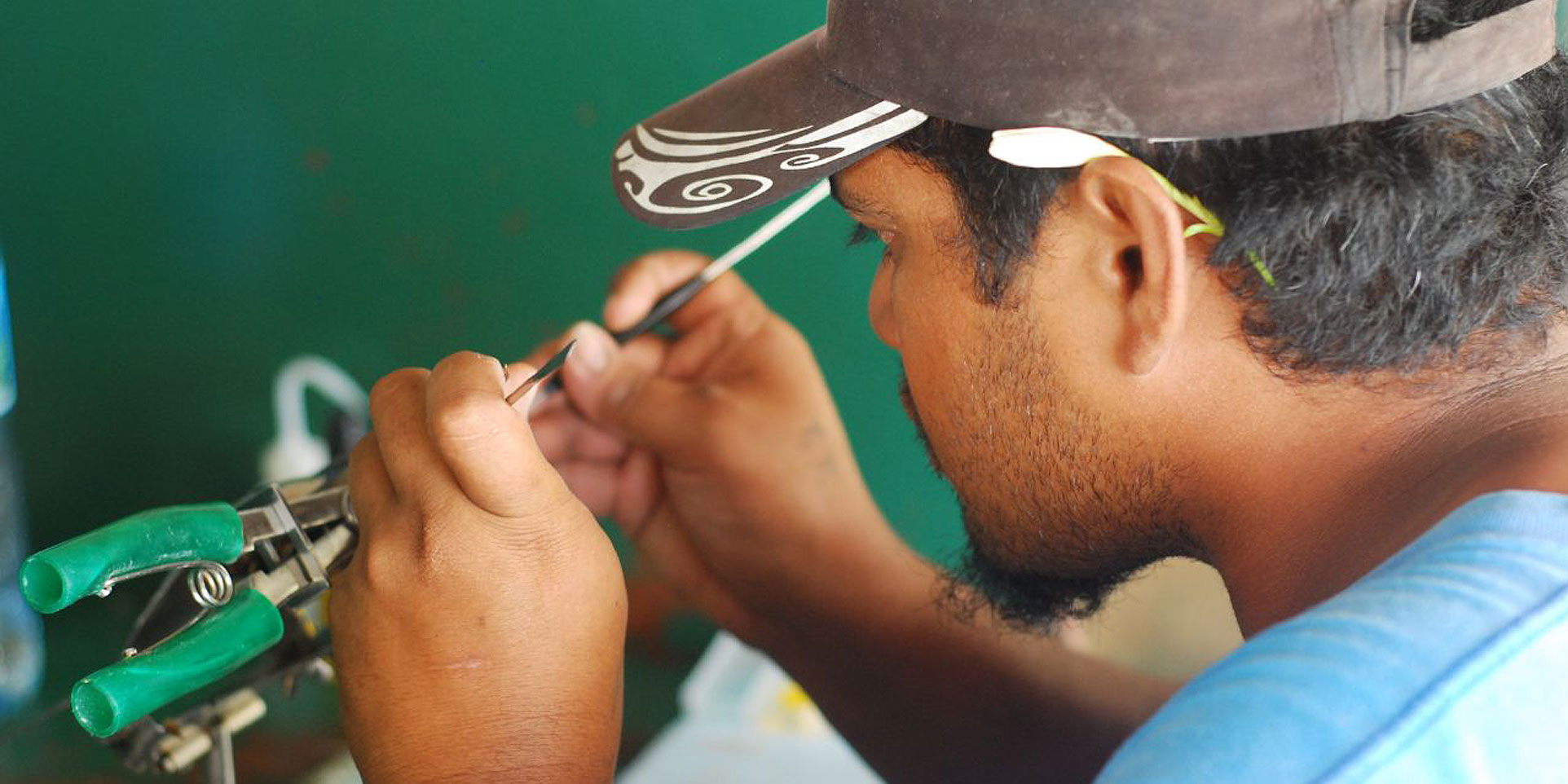
Image: An operation by a pearl farmer to culture a pearl
This simple rule may not be true for nucleated pearls, however, as their size is also influenced by the diameter of the implanted shell bead and how many culturing operations the oyster has had.
Typically, an Akoya pearl will grow between 10 to 14 months before reaching a size of up to 9mm in diameter, a Tahitian pearl may grow for 18 to 24 months to reach a size of 10mm and a South Sea pearl will grow between 2 and 3 years to reach diameters of up to 15mm.
For nucleated pearls, the thickness of the nacre is often a reliable measure of how long each pearl has been cultured and its quality.
A complex partnership with nature...
So to answer the question, there are many factors that determine the size of a real cultured pearl and how long it will take to grow in an oyster or mussel. It is an amazing and complex process that relies on the skill and expertise of the pearl farmer and their partnership with nature.
If you are interested in learning more about the different qualities of a pearl, why not read our Buying Guide to Pearl Grading.
-
Discovering the Treasure of Golden Pearls
Discovering the Treasure of Golden Pearls
Biologists may tell us about warning colours in nature and how we are all programmed from birth to be frightened of stripey snakes or red spiders. But have you noticed how we also universally love the warm, rich colours of yellow gold, autumn, honey, sunset and these golden pearls?
Pearls are traditionally white in colour, often being a symbol of purity and worn by royalty and in wedding jewellery. Any fortunate person who has seen a golden South Sea pearl though is sure to remember it. By some miracle or natural sleight of hand, the soft satiny lustre and enchanting orangey yellow tones of these pearls closely resembles the world's favourite and increasingly valuable precious metal.
Golden South Sea pearls are mainly cultured in the gold-lipped Pinctada maxima oyster, named for the honey coloured mother of pearl lining inside its shell. These oysters produce the highest proportion of golden pearls, though some light golden pearls can also be found in the silver-lipped Pinctada maxima oyster. The majority of golden pearls today come from pearl farms in the Philippines and Indonesia, although deeper "burnt gold' colour pearls have also been farmed in Myanmar (Burma) and Thailand.
A special, sheltered environment is required for culturing South Sea pearls as it can take up to 18 to 30 months to grow each pearl. The best pearl farms are located in remote locations where the water is pristine and there are rich, fresh sources of plankton for the mollusks to feed on. The delicate oysters also need to be protected from other hazards such as typhoons and abrupt changes in water temperature. One of the specialist farmers of golden South Sea pearls is Jewelmer, which has been a leader in the non-extractive, environmentally sound production of golden South Sea cultured pearls since 1979.
The unique opulent and warm colour of golden South Sea pearls is perfectly suited for fine jewellery. Amongst the treasure hoard of designs, the classic pearl necklace remains our most popular, either in monochrome with golden pearls or in multi-colour with white, champagne and golden pearls. Our South Sea pearl necklaces are carefully matched with the glint of yellow gold and pave diamonds.
Naturally golden South Sea pearls should not be treated for colour, however it is possible that pearls found on the market may be dyed. If you fall in love with a golden South Sea pearl, we would recommend that you check that the colour is natural and only buy from a reputable specialist jeweller.
-
The Story of Mikimoto Pearls
The Story of Mikimoto Pearls
The cultured pearl is closely associated with the name Mikimoto, a worldwide retailer and brand that is known for its Akoya pearls and luxury pearl jewellery.
Kokichi Mikimoto is often credited with the invention of the cultured pearl, but there are many other contributors to the beginnings of the story of the pearl industry. Going back to the 13th century, and further to around 100BC in the Canton area, it is thought that the Chinese were the first to produce small blister pearls formed in the shape of Buddha. The Swedish naturalist Carl von Linné also devised a method for culturing pearls in 1748, believed now to be similar to the Chinese method, examples of which can be still seen in London today.
But it was not until much later around 1900, that the English-born Australian William Saville-Kent is believed to have developed a method for culturing the first fully round pearls using a nucleus and a small piece of mantle tissue, which is essentially the technique still used today by pearl farmers. A few years later in 1907 two Japanese men Tatsuhei Mise and Tokishi Nishikawa introduced this technique to Japan, both filing their own patents before eventually collaborating.
Kokichi Mikimoto is still commonly regarded as the founding father of the cultured pearl industry. From humble beginnings, he proved to be an inspiring entrepreneur driving his business to become eventually an international success.
Mikimoto was born in 1858 in Toba, Mie Prefecture in Japan. The son of a noodle seller, in his teens he started trading in noodles and vegetables to help provide for his family. But at the age of 20 Mikimoto discovered pearls, which at the time were mainly sold at inflated prices in Japan's markets as Pearl Powder was believed to be a cure for eye disease, fever, measles, insomnia and other ailments.
Mikimoto decided to extend his noodle business to trade in marine products and pearls, leased a farm at Ago Bay, Japan and from 1888 started to carry out his first experiments on cultured blister pearls using the Chinese method. Mikimoto's initial harvests were however unsuccessful until in July 1893, when he was able to produce a small first harvest of semi-spherical mabe pearls in Japan. Over the years, he would continue to experiment to create a fully round cultured pearl, eventually adopting the technique of Mise and Nishikawa.
These cultured pearls, promoted as “Mikimoto Pearls”, took the UK and European jewellery market by storm with their shape, colour and lustre being offered to early buyers at a twenty-five percent discount to the prevailing price of natural pearls. In 1921, the London Star reported that Japanese pearls were so skilfully made that it was impossible to distinguish between them and natural pearls.
Mikimoto was a skilled marketer and Mikimoto jewellery was offered to royalty, celebrities such as Marilyn Monroe and promoted at international exhibitions using beautiful architectural models made with pearls. Meeting the Meiji Emperor at Ise Shrine, he declared "I would like to adorn the necks of all women around the world with pearls." By the beginning of World War II, Mikimoto had built one of the first international Japanese corporations with its pearls being sold across the world.
In 1954 Kokichi Mikimoto died at the age of 96. Although there are others that may also claim to be the inventor of the cultured pearl, it is undisputable that Kokichi Mikimoto was instrumental in helping to build the cultured pearl industry and the brand that today still bears his name.